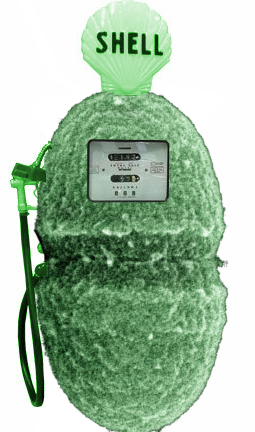Sewerage scoured in fresh quest for fuel
 An extraordinarily deep investigation of sewerage could have implications for protecting the environment, energy recovery and human health.
An extraordinarily deep investigation of sewerage could have implications for protecting the environment, energy recovery and human health.
An international team of scientists have completed a first-of-its-kind microbial analysis of a biological wastewater treatment plant.
The study describes in unprecedented detail the complex relationships within a model ecosystem.
Researchers focused on biofuel molecules – lipids - which accumulate naturally in microbial mats and float on top of wastewater. It could be an excellent source of ‘free energy’, as lipids can be converted into diesel fuel.
“Bacterial communities are everywhere, and understanding how they interact is critical to industry, agriculture, the environment and human health,” said Dr Paul Keim, Director of the Translational Genomics Research Institute’s Pathogen Genomics Division.
“Basic principles of microbial community function can be established in one setting and then used to generate hypotheses and models applicable to all,” he said.
The findings bring together various ecological concepts that have been primarily based on observations in macrobiotic systems, such as forests, rivers and oceans. But these cannot be experimentally investigated in depth because of the sheer size of the biotopes.
For the new analysis of the treatment plant ecosystem, researchers employed several ‘Systems Biology’ methods.
Wastewater on its way to treatment contains energy-rich substances including fats, proteins, carbohydrates and others, which serve as nutrients for the resident bacteria.
Every wastewater treatment plant is therefore a complex ecosystem, the team says, with countless bacterial species adapting to the living conditions in the water, competing for resources and finding a niche in which they can best survive.
New techniques based on the so-called ‘omics’ - genomics, transcriptomics, proteomics and metabolomics - combined with new bioinformatic methods for deep data analysis has allowed experts to unravel processes at the molecular level.
“With these [techniques], we can determine from samples which organisms are living in the treatment plant, and what their population sizes, genetic make-up, activities and material turnovers are like. Therefore, there is no longer any need to study bacteria separately in pure cultures,” researcher Dr Emilie Muller said.
“Based on this, we can ultimately model the material flows in the 'treatment plant' ecosystem and describe, for example, which bacterial species will use and consume which substrate and to what degree.”
One particular bacterium grabbed the researchers' attention: Microthrix parvicella, whose genome sequence they first decrypted two years ago.
This bug can absorb and store an especially large amount of lipids. In winter, up to 50 per cent of all bacteria on the surface of treatment tanks belong to this species.
The team found it astonishing, given that the amount of lipids in the wastewater is fairly low in winter, creating unfavourable living conditions for Microthrix during the season.
The study found that Microthrix possesses 28 copies of the gene that is chiefly responsible for lipid uptake. The amplification of this gene illustrates how important lipid accumulation is for this organism and its associated community.
“Microthrix is what ecologists call a generalist. The organism can adapt to very many living conditions and thereby dominate the highly fluctuating wastewater treatment plant ecosystem,” said Dr. Paul Wilmes, head of the Luxembourg Centre for Systems Biomedicine (LCSB) Ecosystems Biology group, and the study's senior author.
This is helped, among other things, by the 28 genes for lipid uptake, Wilmes said: "Each copy of the gene is a little different from the others. If the living conditions change, say when the temperature drops or the lipid composition changes, then a different lipid uptake gene adapted to that condition sets in. That way, Microthrix can survive in many different environments."
The team's translational aim is to boost the activity of Microthrix to remove as many lipids from the wastewater as possible, for investigations into their use as e renewable energy source.
Dr. Lance Price, a study co-author, said such ecosystems research has important medical implications as well.
“The human microbiome is a similar community of microbes. It dominates many tissues and organ systems through microbiome metabolism, interaction with human cells, and its ability to protect us against pathogens. The systematic analysis of the waste water communities will lead to insights for human health as well as translational applications in sustainable energy.”
The report has been published in the journal Nature Communications.








 Print
Print